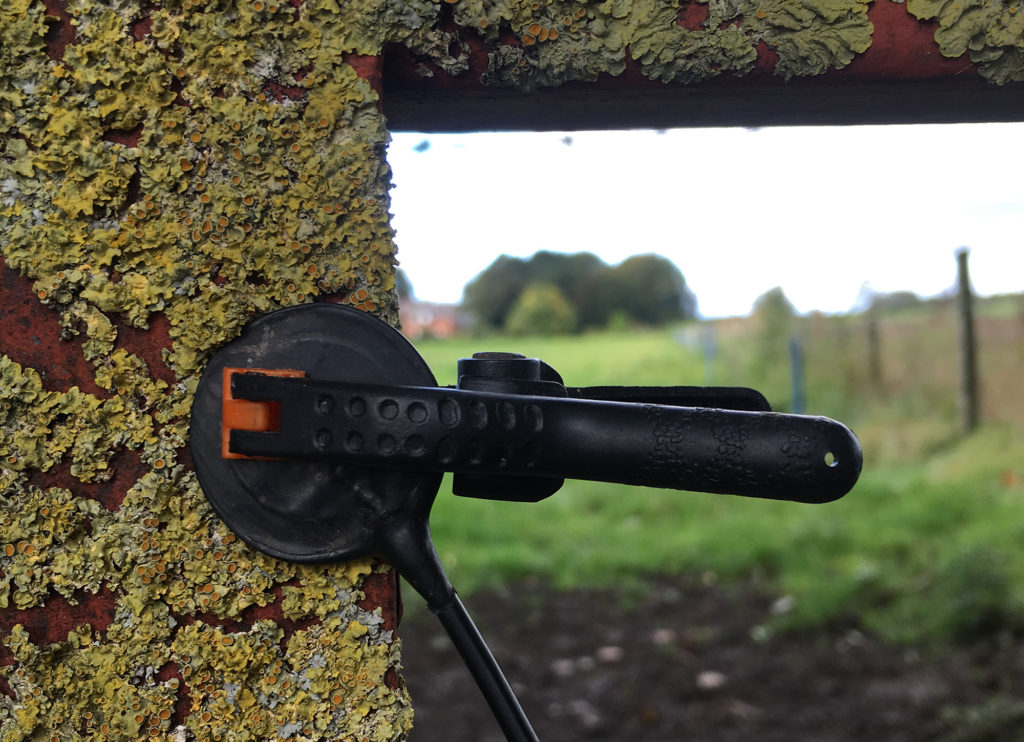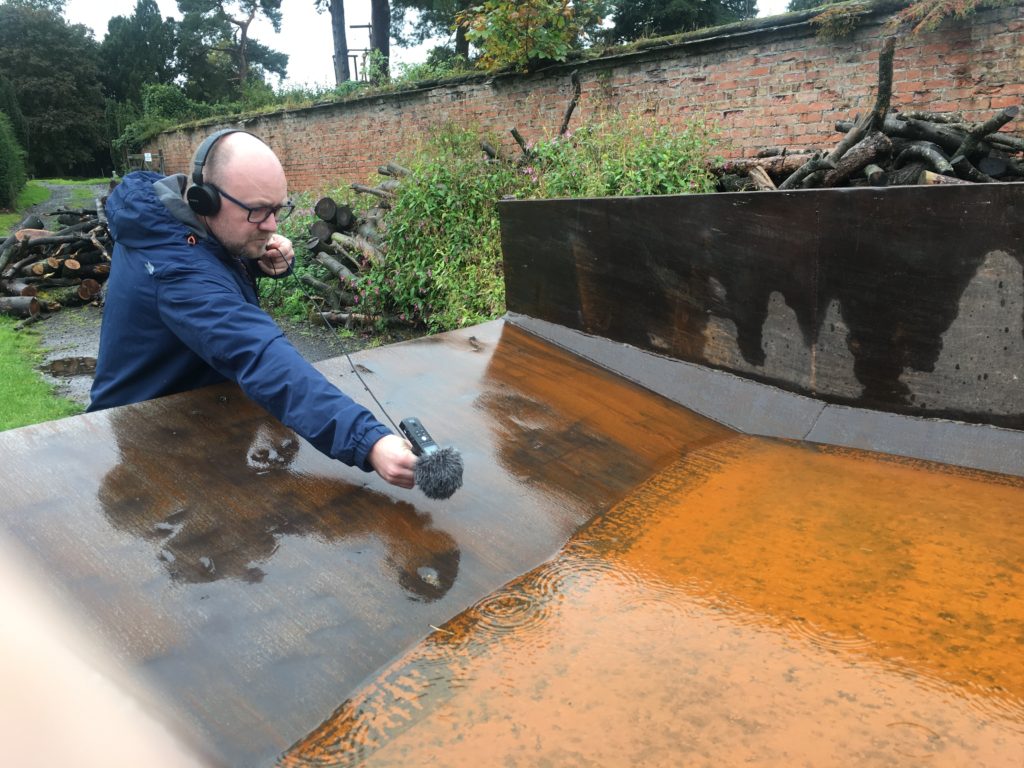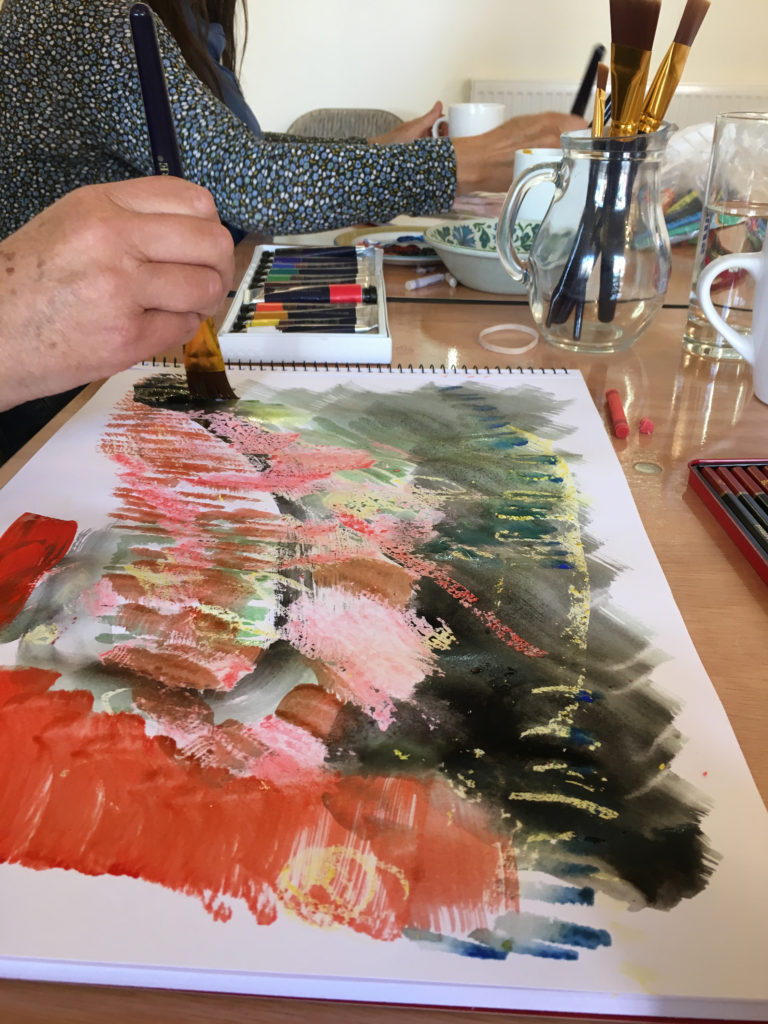Workshops

We returned to the Shed in Aldborough this weekend to run a series of free workshops, exploring the sub-surface through creative sound recording and image making. Rob’s speakers were set up on a table, field recorders were assembled (wind muffs at the ready), an assortment of microphones lined up. And alongside them stood a stack of pads, bag of crayons, tins of pencils. All you need for a fun few hours at the weekend.
One of the great things about running workshops is that you have no idea who is going to turn up, or what their backgrounds might be. But over the course of the weekend, we found inspiration in the people who came along. They began conversationsspanning music concrete, the sound of deep space, painting as landscape excavation, and poetry in archaeological trenches. And everyone arrived willing to just give things a go. We started each session off with a general introduction to the site and ourselves, then Rob talked through the process of recording and composing the Soundmarks pieces. He explained his ‘sound toolkit’, outlining the sorts of sounds picked up by each of the different microphones. It seemed an age since he’d gone through them with me, back on a rainy day in the winter at his studio. Somehow seeing these little spirals of wire and fluff inspires an excitement for the possible, the as-yet-unheard; discovery. And this reverberated at the workshops. Our crews were keen to get going on a walk to see what they could hear. Experiments were made with hydrophones at the Ure, with contact mics on a tractor trailer and along orchard wires. Folk got lost and immersed in their own sound worlds. Back at base, we listened through them over a cuppa, and then got started on some drawings. Eyes closed, marks were made in response to the sound using different pencils. The white wax was used to map the invisible sound world onto the page, revealed by the addition of watercolour.

For me, there were two really lovely moments which came at each workshop. The first was watching people put on the headphones, hear the world amplified and accentuated for the first time, and begin exploring the possibilities of what they might record: the booming thrum of a tractor bucket, a boot in a muddy puddle, a wire on a fence, the rustle of holly leaves. Faces lit up at these new found, magnified worlds right there in the ordinary. The second was when tasked to draw marks in response to the recordings made on site. Around the table were faces lost again in sound, whilst hands busily percussed, rolled, scratched, scribbled, waved across the page. And all completely different – each person’s mark was individual, the sound working through each imagination in myriad ways.
I loved the conversations that grew from all this. Some people struggled to turn off the visual reality of the thing or place where the recording was made, or found it difficult to translate sound into image. We talked about why this might be – how do sound and image merge in our imagination or potential re-making? How does sound enhance or make difficult the process of drawing? With one group we looped it back to record the sound of drawing, which was then played back, for the group to re-draw.Thanks to our enthusiastic and inspiring attendees we’ve gone away from the workshops thinking of more ongoing creative possibilities. It just shows the importance of having the space to explore these processes and ideas.

